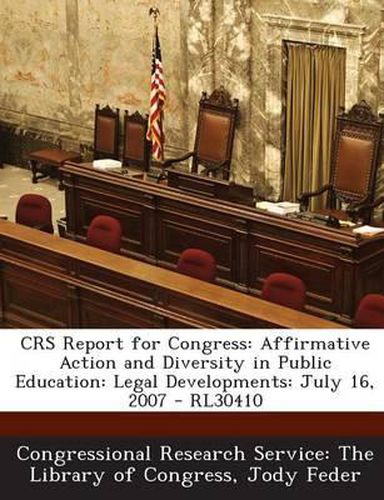Readings Newsletter
Become a Readings Member to make your shopping experience even easier.
Sign in or sign up for free!
You’re not far away from qualifying for FREE standard shipping within Australia
You’ve qualified for FREE standard shipping within Australia
The cart is loading…






Nearly a quarter century after the Supreme Court ruling in Regents of the University of California v. Bakke, the diversity rationale for affirmative action in public education remains a topic of political and legal controversy. Many colleges and universities have implemented affirmative action policies not only to remedy past discrimination, but also to achieve a racially and ethnically diverse student body or faculty. Justice Powell, in his opinion for the Bakke Court, stated that the attainment of a diverse student body is “a constitutionally permissible goal for an institution of higher education,” noting that “[t]he atmosphere of speculation, experiment, and creation’ so essential to the quality of higher education is widely believed to be promoted by a diverse student body.” In recent years, however, federal courts began to question the Powell rationale, unsettling expectations about the constitutionality of diversity-based affirmative action in educational admissions and faculty hiring. After a series of conflicting lower court rulings were issued regarding the use of race to promote a diverse student body, the Supreme Court agreed to review the race-conscious admissions policies used by the undergraduate and law school admissions programs at the University of Michigan. In Grutter v. Bollinger, a 5 to 4 …
$9.00 standard shipping within Australia
FREE standard shipping within Australia for orders over $100.00
Express & International shipping calculated at checkout
Nearly a quarter century after the Supreme Court ruling in Regents of the University of California v. Bakke, the diversity rationale for affirmative action in public education remains a topic of political and legal controversy. Many colleges and universities have implemented affirmative action policies not only to remedy past discrimination, but also to achieve a racially and ethnically diverse student body or faculty. Justice Powell, in his opinion for the Bakke Court, stated that the attainment of a diverse student body is “a constitutionally permissible goal for an institution of higher education,” noting that “[t]he atmosphere of speculation, experiment, and creation’ so essential to the quality of higher education is widely believed to be promoted by a diverse student body.” In recent years, however, federal courts began to question the Powell rationale, unsettling expectations about the constitutionality of diversity-based affirmative action in educational admissions and faculty hiring. After a series of conflicting lower court rulings were issued regarding the use of race to promote a diverse student body, the Supreme Court agreed to review the race-conscious admissions policies used by the undergraduate and law school admissions programs at the University of Michigan. In Grutter v. Bollinger, a 5 to 4 …